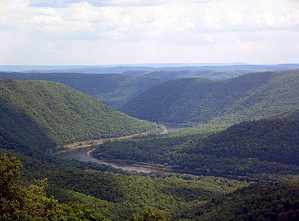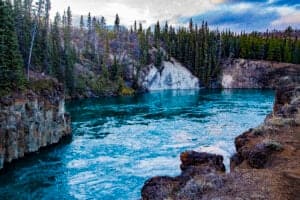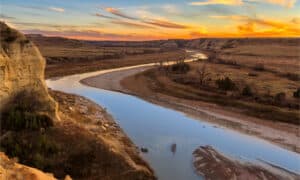Water is what defines channels, and rivers flow in some of those channels. As rain lands on the earth and pools enough to run, it begins moving. This movement, over many millennia, carves a path of least resistance into the ground and rocks.
Eventually, the path of least resistance from the mountains to the ocean is cut out, and a river exists in the main channel to the coast. Other channels from other points where precipitation has landed go through their path of least resistance. These paths meet up at the river and cause the river.
What are some other facts about rivers and channels? We’ll dive in deeper now.
River vs Channel: A Comparison
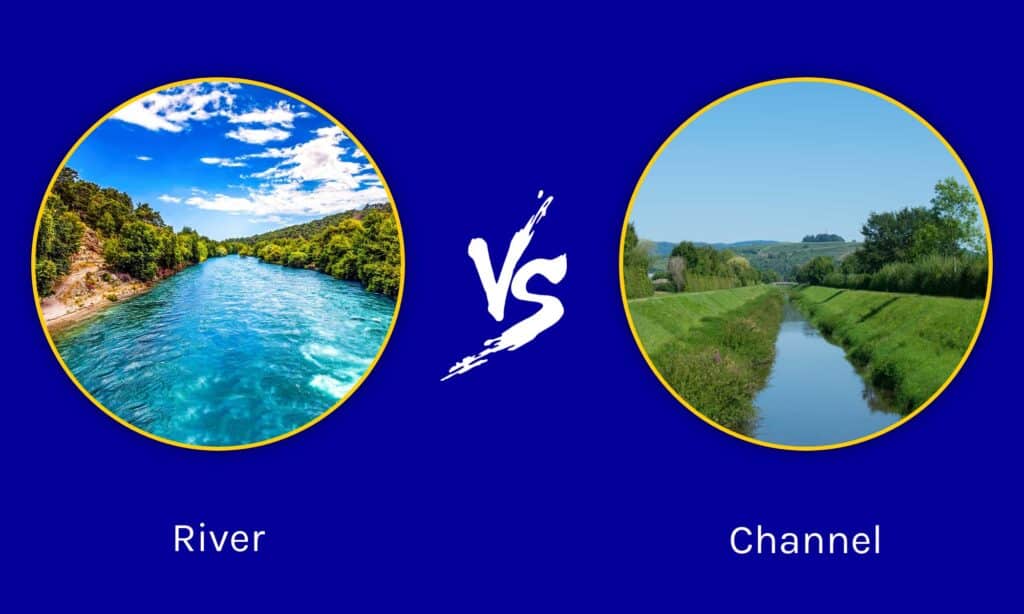
| River | Channel | |
|---|---|---|
| Has Banks and Beds? | Yes | Yes |
| Comes From a Lake? | Yes | No |
| Flows in One Direction? | Yes | Yes |
| Deltas, Creeks, Streams, and Estuaries | Are Not Rivers | Are Channels |
River vs Channel Explained
These are the similarities and differences between a river and a channel:
- A river is a channel, but a channel isn’t necessarily a river.
- Both rivers and channels have banks and beds.
- Channels and rivers both flow in one direction.
- Deltas, creeks, streams, and estuaries are not rivers. They are channels.
- Rivers usually originate from a lake, whereas channels form wherever rain falls.
How Do Channels Form?
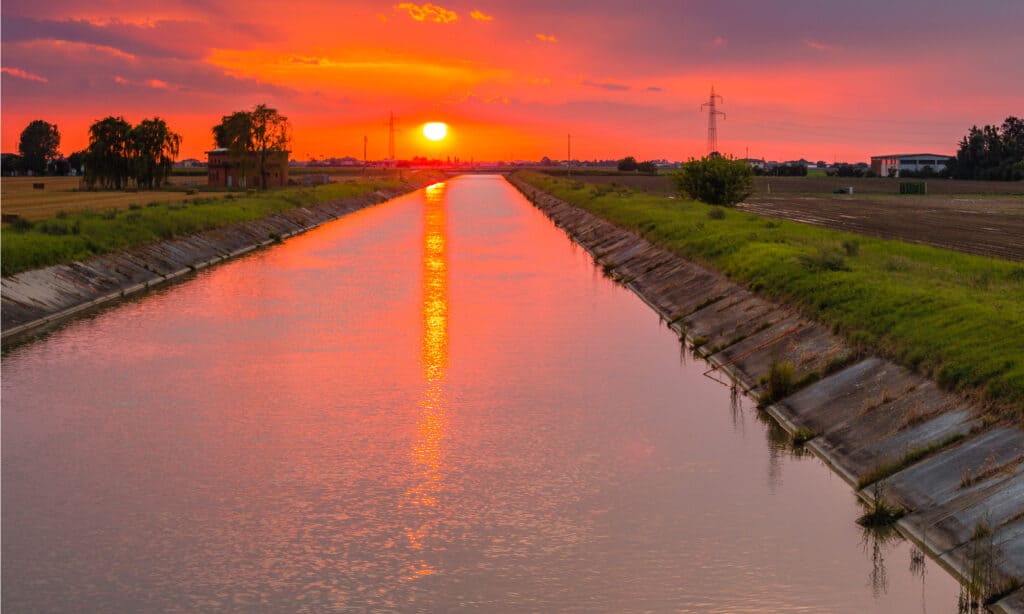
Tiny channels connect to other channels, and the channel gets bigger.
©Vivida Photo PC/Shutterstock.com
The channel head is where mountain slopes start sending water into an area with defined banks and beds. Enough water runs off into the same path of least resistance. Tiny channels connect to other channels, and the channel gets bigger until it reaches the ocean.
The main artery of this channel system is the river. All the channels that go into the water mass that makes it into the ocean are part of one watershed.
How Do Rivers Form?
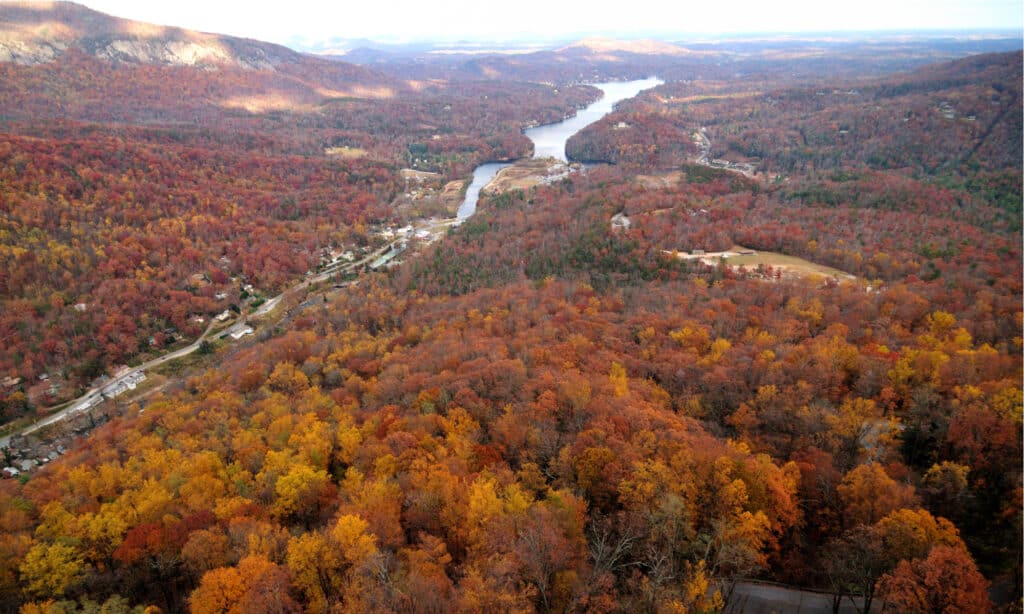
Rivers curve and bend due to the shifting of sediment.
©JSpannhoff/Shutterstock.com
Rivers originate in the mountains, usually at a lake, but sometimes due to natural springs or other rare phenomena. Precipitation follows its channels, like streams and creeks, into the lake.
Rivers are dynamic and change based on obstacles presented. Suppose one bank of a river experiences a disturbance, like burrowing animals. In that case, the physics of the water flow and the movement of particles within the river over time will fundamentally change the channel. That’s why rivers curve and bend.
When a lake gets full enough, part of the water at the top of the lake finds itself in another channel. This channel runs to a lower elevation, created over time, that eventually dumps into the ocean.
What is an Oxbow Lake?
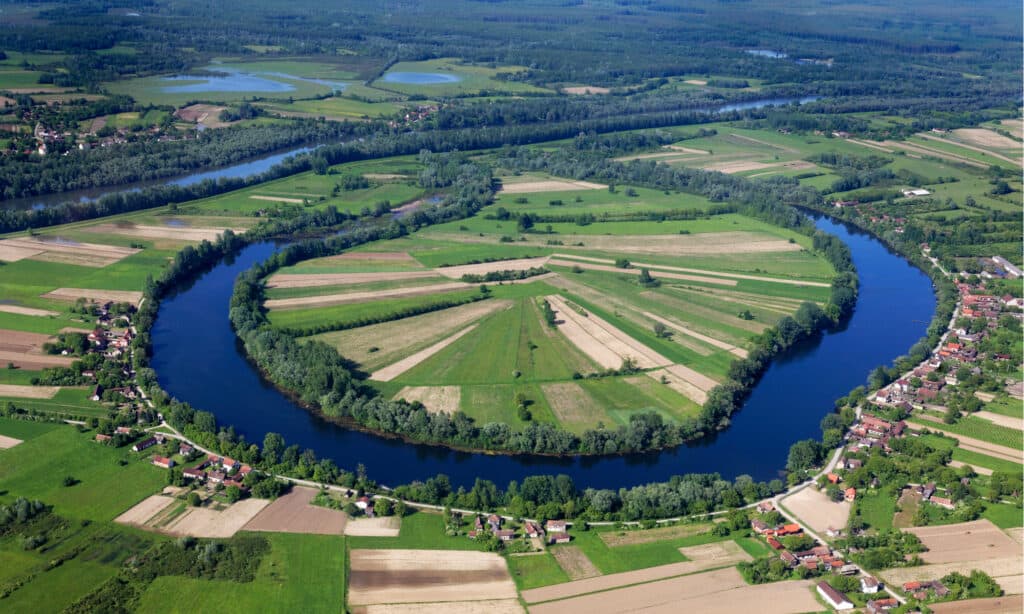
Oxbow lakes are formed when part of a river becomes cut off.
©goran_safarek/Shutterstock.com
Imagine a river as a standard squiggly line. As a river gets older, its curves get bigger. Eventually, if the squiggly line is squiggly enough, some of the squiggles touch each other. When this happens, the water’s path of least resistance changes.
Water begins to circumvent through the hole created by the squiggles touching. As this happens, sediment builds up, and eventually, an entire section of the river becomes cut off from the path of least resistance. When this happens, an oxbow lake is formed.
Wildlife in Rivers and Channels
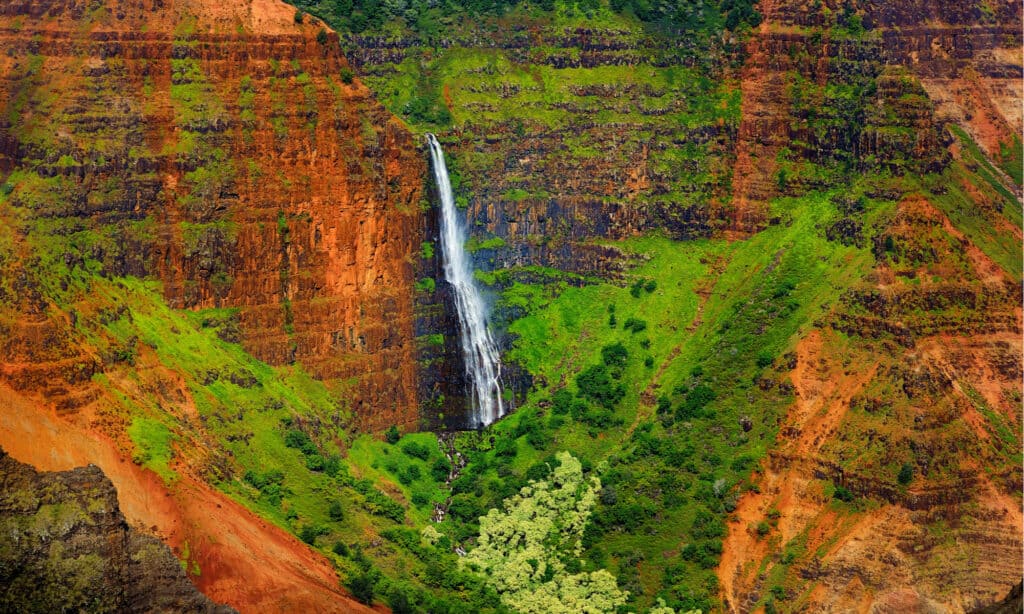
Drastic changes in elevation help create multiple ecosystems along the same river.
©MNStudio/Shutterstock.com
When rivers are at elevation, the path of least resistance can bust into multiple channels for a time which changes due to the amount of sediment this kicks up. Because of this, not much grows along the river, nor are the waters suitable for fish.
Some fish still come up the river to spawn, however. Big fish love to hide out in the deepest part of river channels when things are dry more downstream.
Downstream, when the water isn’t moving so quickly because the elevation isn’t changing as rapidly, plant life takes hold in various forms the closer the river gets to the ocean. This vegetation slows the river down more by catching sediment and debris.
As a river approaches the sea, it may turn into a delta, a floodplain, an estuary, or something else as a transition phase before it hits the ocean. It depends on what the water decides is its path of least resistance.
Animals can be quite different because of changing ecosystems along a river. Where there are rapids or waterfalls due to a drastic elevation change, fish populations may have been cut off from each other and developed in their ways.
What is a Lava Channel?
Lava forms channels in a somewhat different way than water. Lava follows the path of least resistance from a volcano to the ocean, but the banks formed to make the channel are really the result of cooling lava on the fringes of the flow.
Lave builds surfaces; it doesn’t carve away at them. Its banks keep renewing, so a channel can still grow deeper as everything builds up around the flow.
Channels on Other Planets
There are huge but dried-up channels on both Mars and Venus. It is believed that the channels on Venus were created by lava, whereas the channels on Mars were created through flooding water.
New studies have shown that some of the channels made on Mars were probably the result of lava flows, so our understanding of lava channel formation is still evolving. The only confirmed channels with liquid still in them in the solar system are on Titan. Titan is one of Saturn’s moons, and it is much colder than our planet. Methane rain occurs, and this rain pools in lakes. It takes channels to move this methane around.
The photo featured at the top of this post is © goran_safarek/Shutterstock.com
Thank you for reading! Have some feedback for us? Contact the AZ Animals editorial team.



